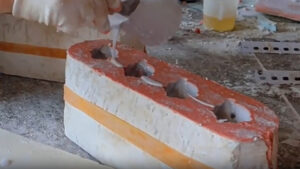
Snow globes are more than decorations—they’re tiny worlds of wonder. But how do you know if you’re holding a treasure or a dud?
Check the liquid clarity, base material, and figurine details. High-quality globes have smooth glass, balanced liquid, and intricate designs that last for years.
Let’s shake things up and dive in.
What should I look for in the liquid and glass?
I once bought a snow globe that leaked within a week. Now, I know what to inspect before buying1.
The liquid should be clear, not cloudy. The glass must be smooth, without bubbles or scratches. A balanced liquid ensures the snow falls evenly.

My Quality Checklist
Here’s how I test a snow globe’s liquid and glass:
| Feature | High-Quality Sign | Red Flag |
|---|---|---|
| Liquid clarity | Crystal clear | Cloudy or discolored |
| Glass surface | Smooth, no imperfections | Bubbles, scratches, or cracks |
| Liquid balance | Snow falls evenly | Snow clumps or sticks |
I always tilt the globe gently to see how the snow moves. If it clumps or sticks, it’s a sign of poor quality2. Also, tap the glass lightly—it should feel sturdy, not thin or brittle.
How do I evaluate the base and figurines?
I learned the hard way that a wobbly base3 ruins the magic. Now, I pay close attention to the details.
The base should feel solid and well-crafted. Figurines must be detailed and securely attached, not flimsy or glued poorly.

Figurine and Base Tips
Here’s what I look for:
- Material: Ceramic or resin bases last longer than plastic.
- Weight: A heavier base feels more premium and stable.
- Details: Figurines should have fine details, like facial expressions or textures.
Last winter, I bought a globe with a Santa figurine4. The base was lightweight plastic, and Santa’s arm fell off after a few shakes. Now, I always check the base material and how the figurine is attached. Pro tip: Avoid globes with glittery bases—they often feel cheap and scratch easily.
What makes the snow and movement high-quality?
I used to think all snow was the same until I saw how some globes sparkle like diamonds.
High-quality snow is fine and evenly distributed. The movement should be smooth, not jerky, and the snow should float gracefully.

Snow and Movement Secrets
Here’s how I judge the snow and movement:
| Feature | High-Quality Sign | Red Flag |
|---|---|---|
| Snow texture | Fine, glittery particles | Chunky or uneven flakes |
| Movement | Smooth, graceful swirls | Jerky or clumpy falls |
| Sparkle effect | Bright, reflective shimmer | Dull or flat appearance |
I once found a globe with snow that sparkled like real snowflakes. The secret? High-quality synthetic snow that reflects light beautifully. Avoid globes with snow that looks like plastic bits—it ruins the magic.
How do I assess durability and craftsmanship?
I’ve had globes break during shipping, so I’ve become a durability detective5.
Check seams, seals, and overall construction. A well-made globe feels sturdy, with no gaps or loose parts.

Durability Tests
Here’s my step-by-step inspection:
- Seams: Run your finger along the edges—they should feel smooth and tight.
- Seals: Look for leaks or gaps where the glass meets the base.
- Construction: Shake gently to check for rattling or loose parts.
Last year, I ordered a globe online. When it arrived, the seal was cracked, and the liquid had leaked. Now, I always inspect the seams and seals6 before buying. Pro tip: Ask about return policies—reputable sellers stand by their products.
Conclusion
A high-quality snow globe is a little piece of magic. Choose wisely, and it’ll last for years.
-
Discover detailed inspection tips to ensure you choose a durable and beautiful snow globe for your collection. ↩
-
This resource will help you understand the signs of poor quality in snow globes, ensuring you make a wise purchase. ↩
-
Understanding the impact of a wobbly base can help you make better purchasing decisions for decorative items. ↩
-
Explore the best options for globes with Santa figurines to find durable and high-quality choices for your collection. ↩
-
Learning how to assess product durability can help you make informed purchases and avoid disappointments. ↩
-
Inspecting seams and seals can prevent issues like leaks and cracks, ensuring you receive a quality product. ↩





